Futomaki / Wooden Roller Clamp : Handy Tool of Hanging Scroll for Safekeeping
Movie: English Subtitle Available | Futomaki / Wooden Roller Clamp : Handy Tool of Kakejiku/Hanging Scroll for Safekeeping
Contents
- 1 Movie: English Subtitle Available | Futomaki / Wooden Roller Clamp : Handy Tool of Kakejiku/Hanging Scroll for Safekeeping
- 2 Futomaki / Wooden Roller Clamp
- 3 Instruction in Usage of Futomaki / When You Display Kakejiku
- 4 Instruction in Usage of Futomaki / When You Stow Kakejiku
- 5 Your Order is More than Welcome
Futomaki / Wooden Roller Clamp
This time, we would like to introduce ‘Futomaki / Wooden Roller Clamp’ a special purpose tool for preventing creases and wrinkles which could occur on a kakejiku during storage.
We unroll a kakeiku for display and roll up when we put it away and this repetitive action would cause a typical damage of kakejiku such as creases and wrinkles.
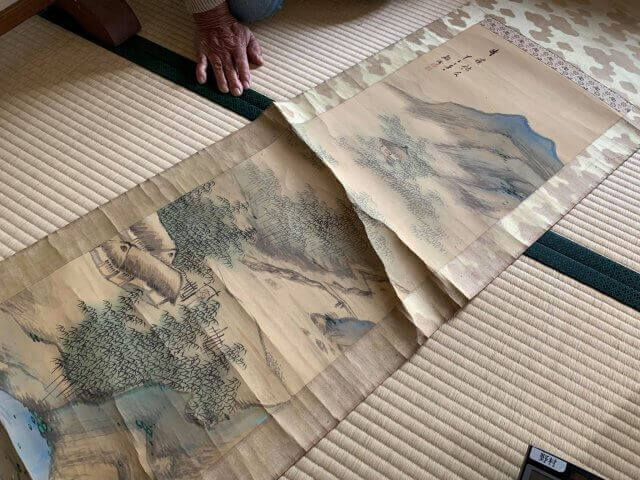
creases and wrinkles
These damages will be a distraction when admiring the artwork and most importantly, for the longer lifetime of the work they must be prevented as they could cause further damages like tear and split.
I wonder if you know. Here is a handy tool which prevents those damages called ‘Futomaki’.

I assume people those who knows about futomaki have increased recently, but given the population of who owns kakejiku, most of them still have no idea about the tool.
I understand the reason why the tool hasn’t been well known yet. Presumably it’s because it has been introduced merely after the late Showa period, around the high economic growth period.
The purpose of futomaki is to enlarge the diameter of the roller rod of kakejiku when it’s stored.
If you compare this one and the one which is rolled up with an ordinary way – called ‘Namimaki’, the size difference is obvious.
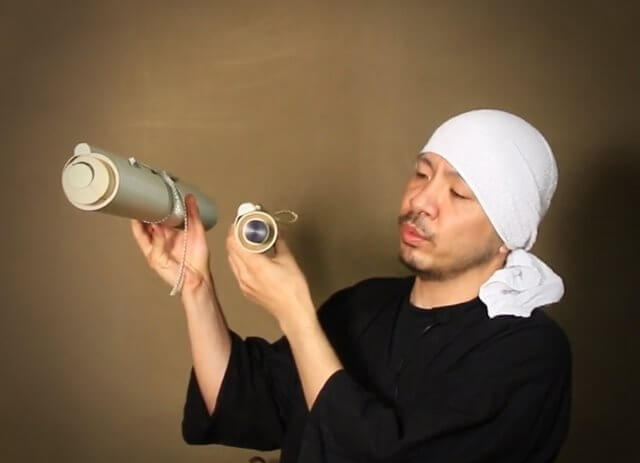
The left one is futomaki and the right one is Namimaki – with a usual rolled size.
Rolling up a kakejiku by a roller rod with the bigger diameter is recommended because tension is generated when an object is rolled and for the same reason the stress falls on an artwork when it’s rolled. The tension is increased in proportion to the tightness of a rolled up kakejiku. When the burden becomes heavier it causes creases and wrinkles and that is why kakejiku mustn’t be rolled up tightly.
If you could imagine what would happen to drawing paper. The hard paper breaks with a snap when rolled with a small diameter. In contrast, it doesn’t break when rolled loosely. For that reason we tend to carry the paper by rolling it up roughly and big in size binding it with a rubber band or something.
On the same principle, futomaki is a tool which rolls an artwork loosely and rolls it up with the bigger diameter while reducing the tension and burden all possible.
It’s mainly used for storing heavily damaged or thickly painted artworks yet these days it’s also fulfilling the needs of safekeeping of valuables.
Instruction in Usage of Futomaki / When You Display Kakejiku
Now then, I’d like to show you steps from a step – displaying kakejiku once this futomaki is taken out to a step – putting the kakejiku away using this futomaki.
Right now, this kakejiku at the alcove is hanged on a hook with a hanging cord, this time I used a hook called Jizaigake (Height-adjustable Stick). This kakejiku will be unrolled from here.
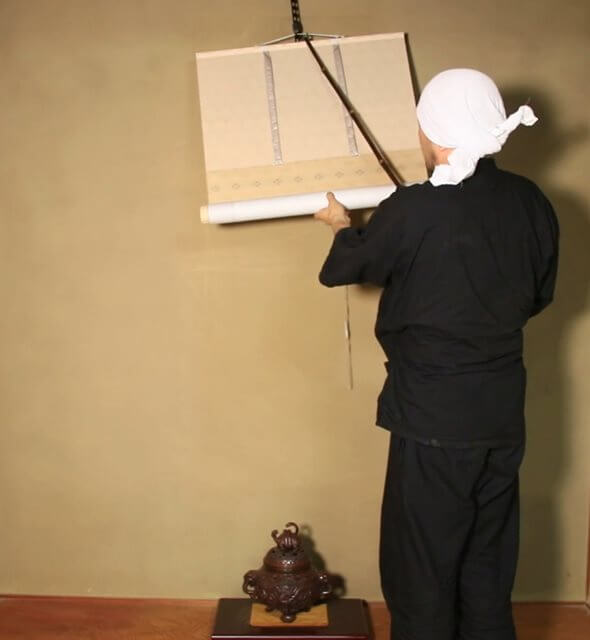
After the kakejiku is fully unrolled, detach the futomaki by opening the front and rear side of the roller clamp.
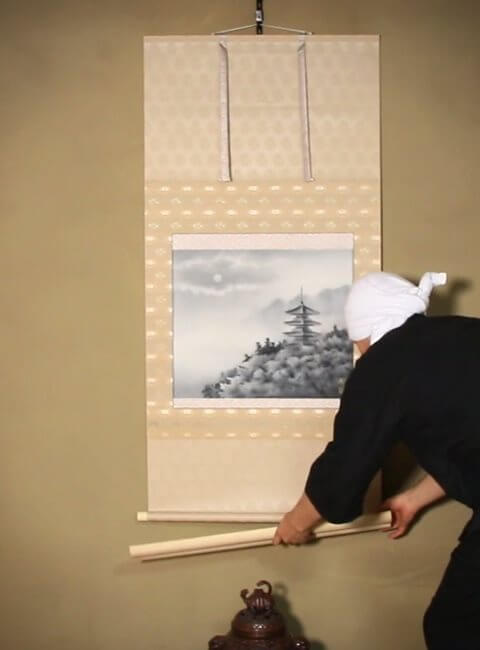
Some customers display their kakejiku with a roller clamp of futomaki attached but it’s not the right way.
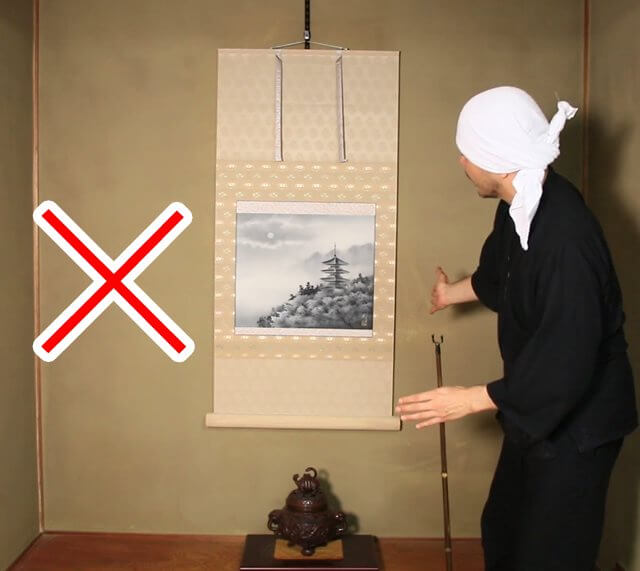
The front and rear side of a roller clamp of futomaki opens and when you appreciate the kakejiku, the clamp of futomaki is supposed to be removed in like manner you usually admire a kakejiku without the tool.
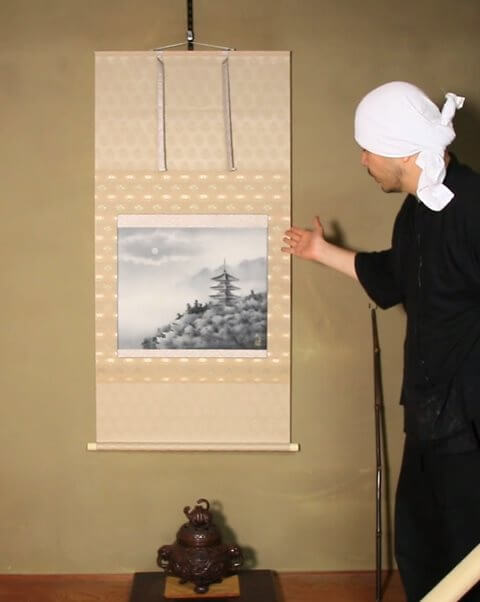
Instruction in Usage of Futomaki / When You Stow Kakejiku
Regarding the storage procedure, as I mentioned earlier the front and rear side of a roller clamp of this futomaki widely opens.
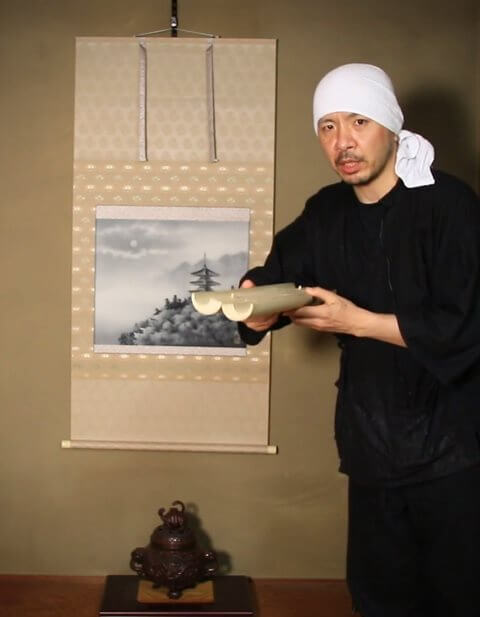
This roller clamp is carved so as to have space about the same size of the rod of kakejiku so it creates a half moon shaped hollow at the front and rear side when it’s opened.
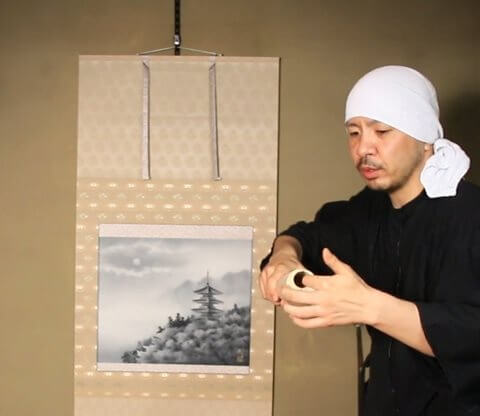
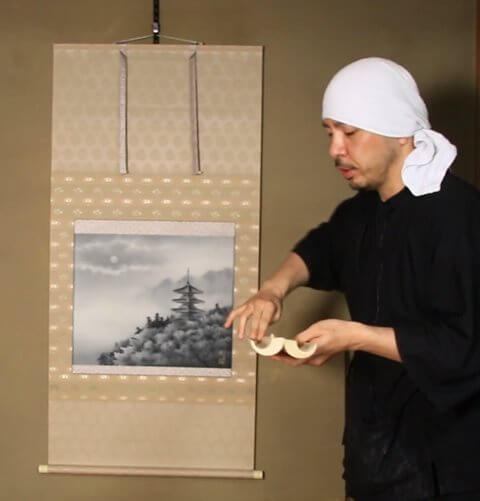
Inlaying the roller clamp along the rod attached at the bottom of the kakejiku. – you would feel this action more like ‘putting on’ rather than ‘inlaying’.
A roller clamp of futomaki occasionally won’t close properly because of an unique shaped or a bigger size roller knob and in such cases the hollow of the futomaki is needed to enlarge by a bespoke order.

After that the attachment is all done by closing the roller clamp.
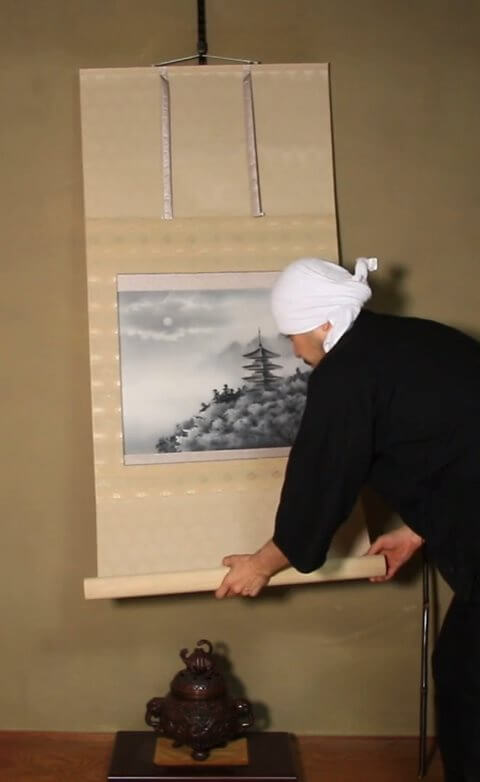
Then, rolling it up as usual.
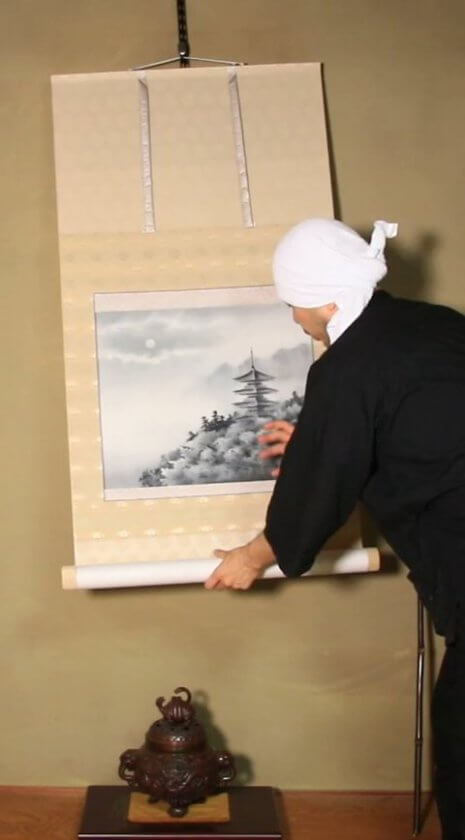
There is a point should be noted. Which is ‘there are the front and rear side of the roller clamp.’
In fact, if you look at the roller clamp from the side, the one part is higher than the other part. The difference can be found by touching it.
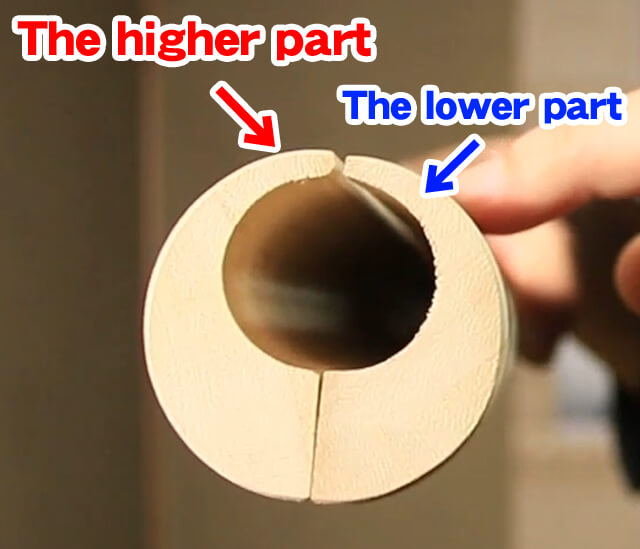
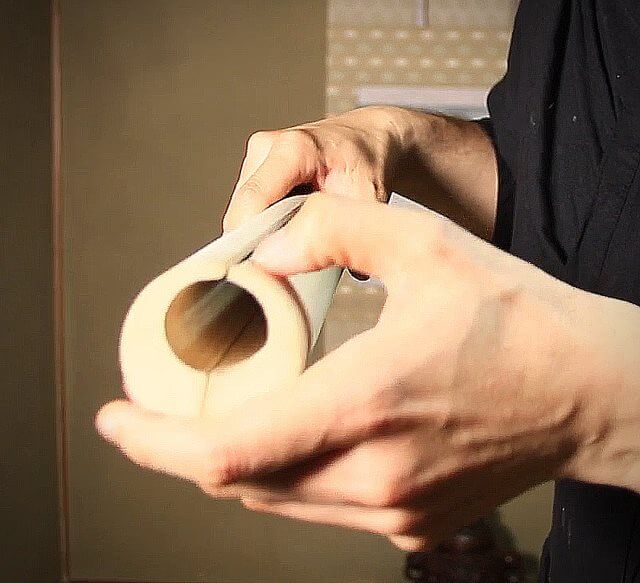
A roller clamp is used placing the lower part at the front. As if the higher part is placed there, the closing part of it can harm the bottom part of fabric – called ‘Chi’ and leave a mark. Although it rarely happens, as I’ve seen the trouble several times I set the lower side at the front as a precaution.
A roller cramp has a tiny jut and hole and the front and rear side of the cramp are often explained by the position of them.
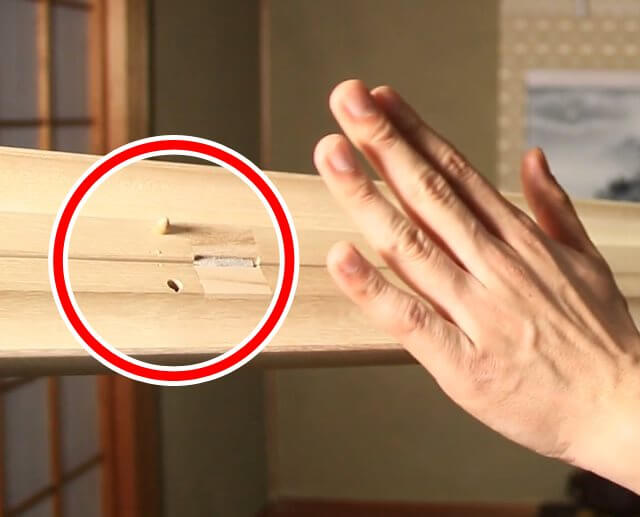
In most cases, the side with a jut is thought to be set at the rear yet the position of the jut and hole can be reverse depending on the paulownia box manufacturer therefore, the position of them doesn’t always tell a certain side of a roller cramp of futomaki. For this reason, I would make sure the side by the height of the roller cramp.
The functional shape of a roller clamp varies depending on the paulownia box manufacturer and some futomaki is designed to have a narrow space at the front to prevent direct contact with the fabric of Chi section of kakejiku.
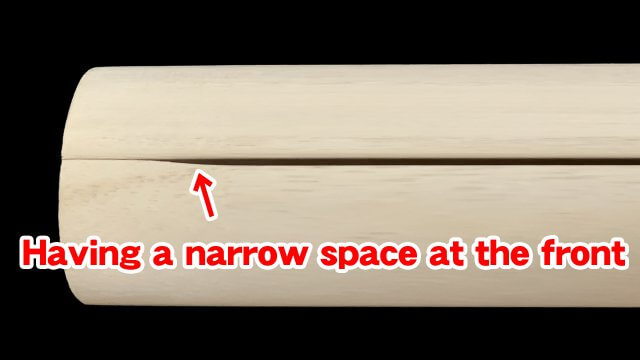
I’ve also seen a roller clamp intended to have openings at the both ends. These shapes are uniquely designed by each paulownia box manufacturer so it’s best to ensure that on every occasion but still it would seem that to distinguish between the front and rear side of the clamp, the most reliable way is by the height of each side of the clamp.
Paying attention to the right side to set, once the roller clamp is attached to the roller rod of kakejiku, the kakejiku will be rolled up as usual.
The state of the kakejiku after it was rolled up completely.
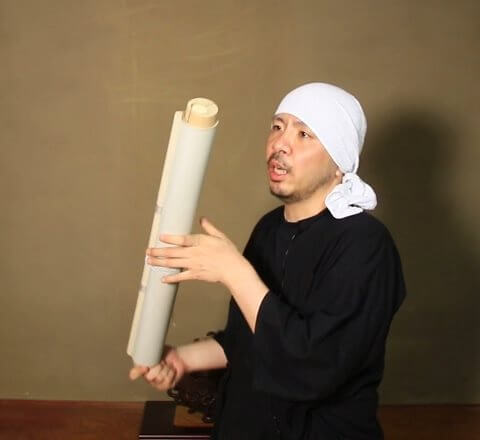
Followed by storing the kakejiku, which has been rolled up with the roller clamp of futomaki, into a paulownia box whose size is higher and deeper than an usual paulownia box, called ‘namibako’ due to the mass of the kakejiku enlarged by a roller clamp of futomaki.
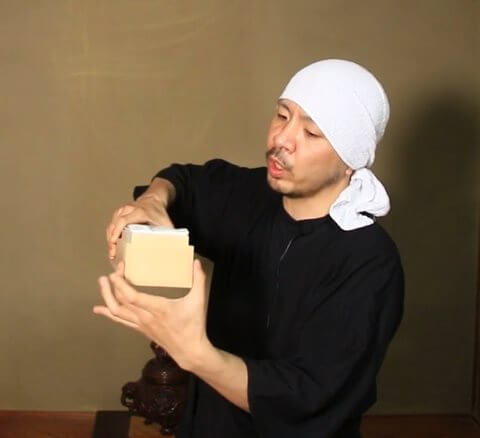
It’s all done. As you see, the burden falls on a kakejiku is reduced by making use of futomaki and a kakejiku will be appreciated for many years to come.
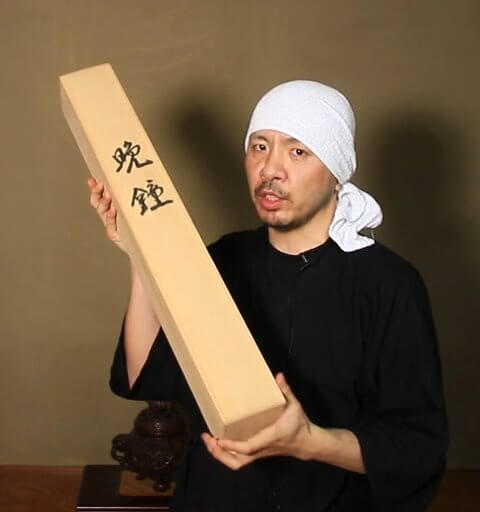
Your Order is More than Welcome
Futomaki is a fantastically practical tool to store a kakejiku or scroll and currently, we are having more and more orders from art museums and museums abroad.
If you send us the photo and size of your kakejiku, we are able to make a compatible futomaki following the details. So please feel free to contact us if you are considering use of futomaki for storing your art object.


